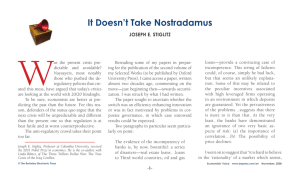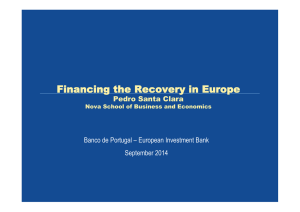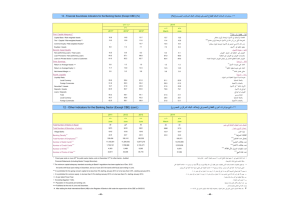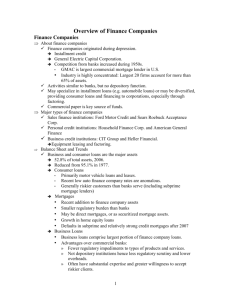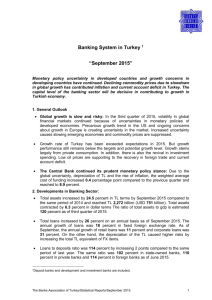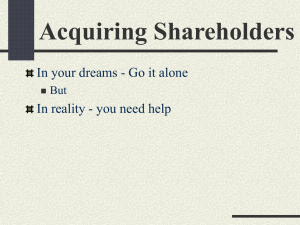Slides - Insight – University of Gloucestershire
advertisement
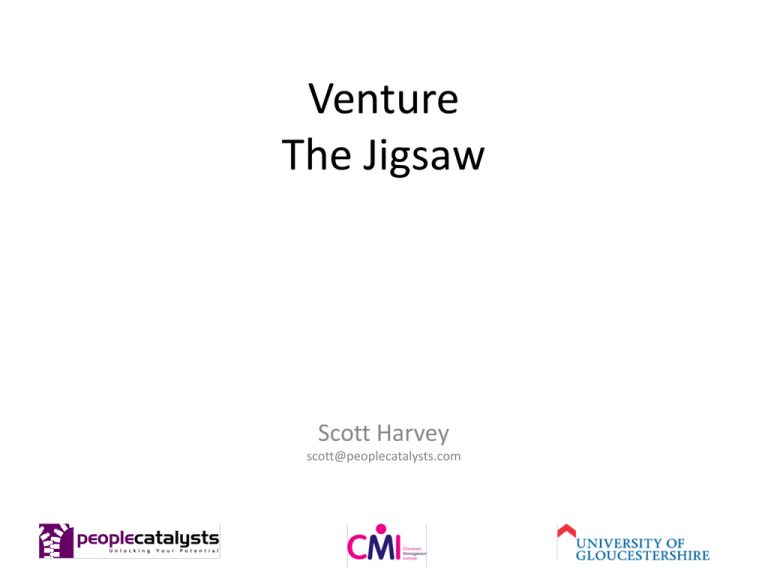
Venture The Jigsaw Scott Harvey scott@peoplecatalysts.com Aim • To consider some real life management issues you need to think about as part of building a business • The purpose of a business • The audience for a business plan • Consider some key business processes A Jigsaw? Hobby? • Watch that you don’t destroy something you really like by turning it into a business that gives you an 18 hour day • And remember if you are REALLY successful, someone may want to buy it so it will not be yours any more! KEY ISSUES The key purpose of any business • To make money ie profit (loss equates to going out of business)! • To repay with interest (or simply pay a commission on the ongoing lendings used by the business eg shareholder profit bonus) • To continue to operate (to employ owners or people to allow an ongoing income) Key considerations about the business • Marketing programmes (7 Ps) – – – – Product (ie what is it?) Price (premium, niche, everyday) Promotion (advertising and location of knowledge about the product) Place (of sale, does it go through distributors or do they come to you eg dentist) – Packaging (brand image, logo, colour scheme – even for business cards) – Positioning (in customer mind) – People (who’s involved in it) • • • • • What’s it going to be called (in what language)? What’s the market for it and which sectors – is it international (cultures) Maintaining and growing the customer base (emotional link) Distribution and suppliers (who and where) Use of discounts and incentives (eg Ice cream in Winter) Competition • • • • Scale Type Ease of others to copy you How long will it last? Strong Intangibles • • • • • • Quality of product or service (Rolls Royce or Fiat) Reputation (notably in service sector) Goodwill (and maintaining it) Problem response Customer relations (by all in the business) Public perception of the product/service sector (eg of banks) • Good enough is not good enough (eg Ofsted) • Aim must be repeat sales! MONEY, MONEY, MONEY Sources of Money • • • • • • Banks Investment companies Family and friends Shareholders Own capital (eg re-mortgage) Other loans (eg government incentives, small business start-up or regional funds etc) • Primary audience for the Plan Good money management • • • • Credit control (cash flow) Reduction of borrowings Investment policy (return on investments) Cash days/ working capital needs (how much is locked away) • Think about where to invest (cash cows, dogs etc) Optimum use of assets • Money, Property, People and increasingly Information • Depreciation and equipment investment decisions • Gearing (Loans to owned capital) • Interest levels for loans (and cost of early settlement) • Stock (and cost of holding/ aging assets) • Capacity and utilisation rates 1% principle (or small steps work) PEOPLE People So who are the groups involved • Customers now and future/markets • Shareholders/ Investors/ Banks • Members of staff/ partners • Owners • Competitors (watching how you do things) • But also legal, tax and government and international standards and authorities eg CIPS EU UN etc. • eg the university answers to you as students, to HEFCE on behalf government, to Council as the senior body in the Institution and many others. Key People Issues • • • • Culture (all friends together or structure) Change and how it’s managed Trust and honesty (how much) Leadership Skills (even in a simple partnership) • Planning of resources (and loss of them) • Retention of key employees (is it just money?) • HR policies (eg holidays) Best use of employees • Clear business goals (mission-vision-strategybusiness plan) • Organisation structure (see Mintzberg models) • Roles and responsibilities • Information flow • Resource planning and scheduling • Evaluation/ training • Pay and incentives (eg performance bonus) Summary • • • • • • • • Be clear what the offer is Have a clear difference from others Generate income Stop money going out Make the best use of people Optimum use of assets Good money management Strong intangibles


